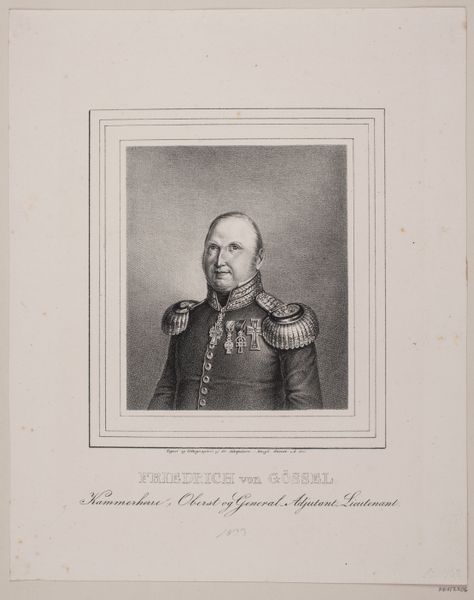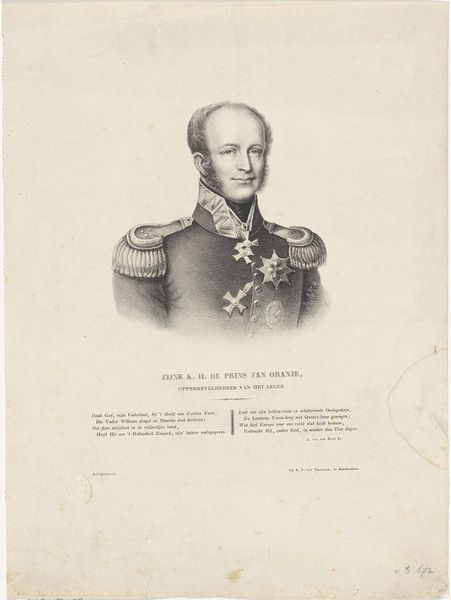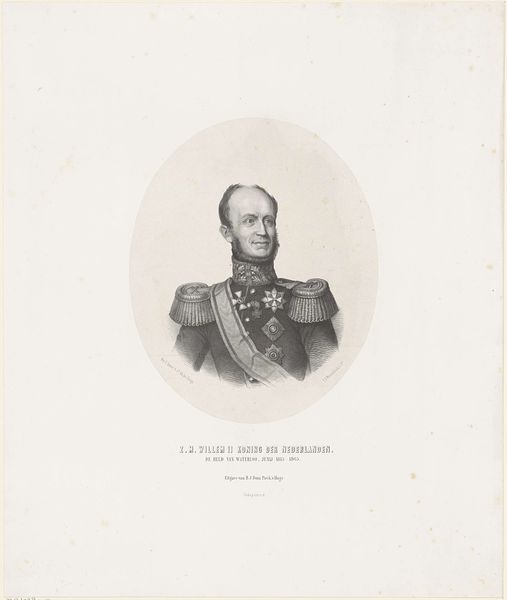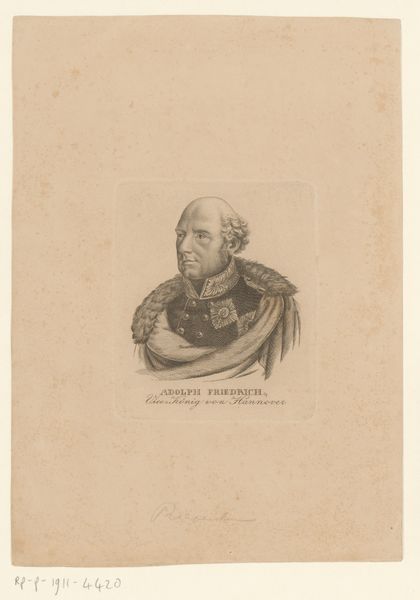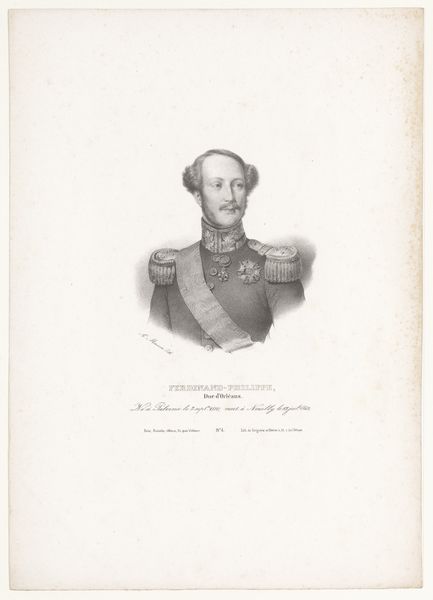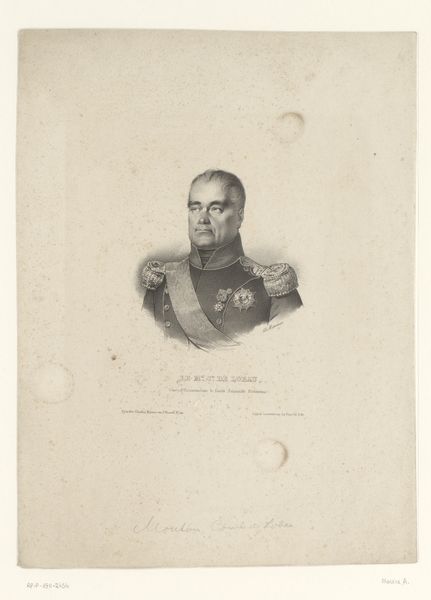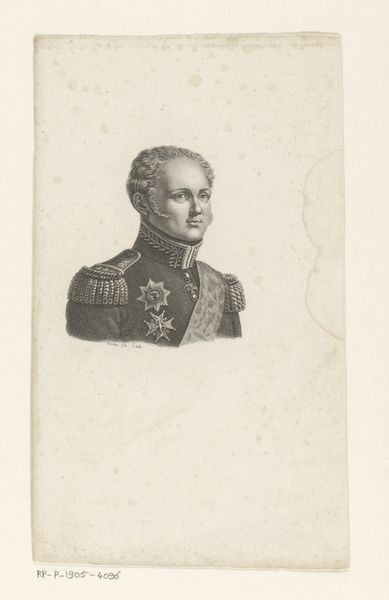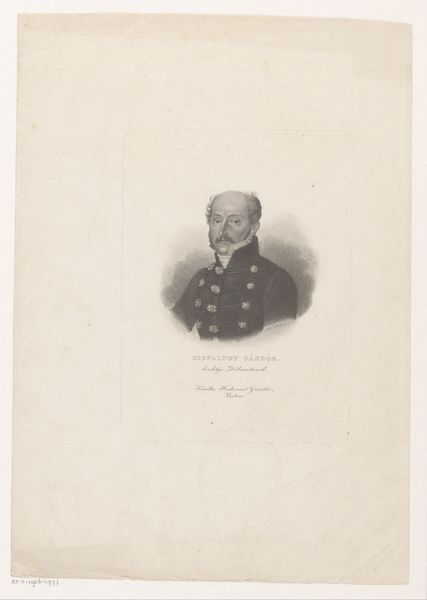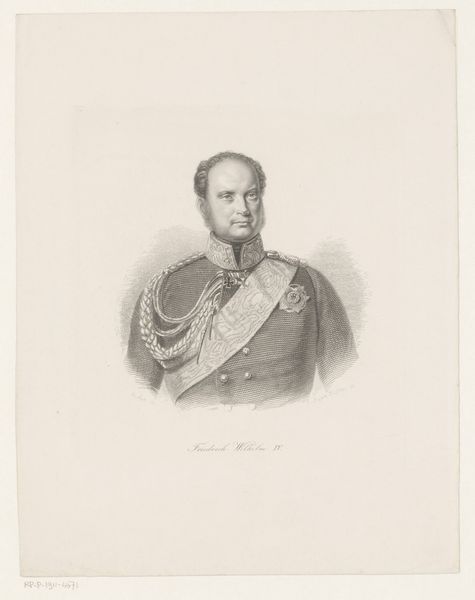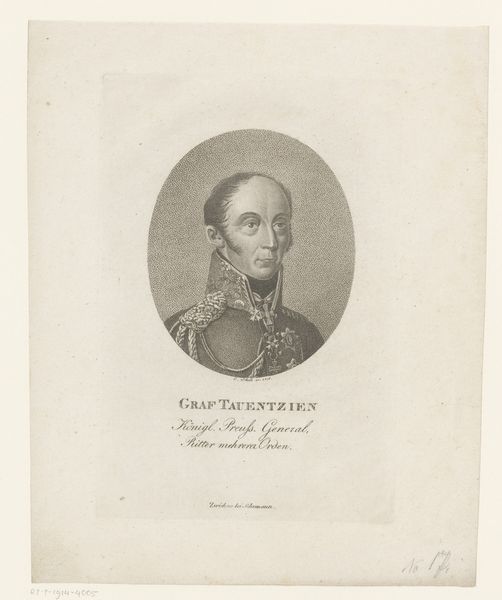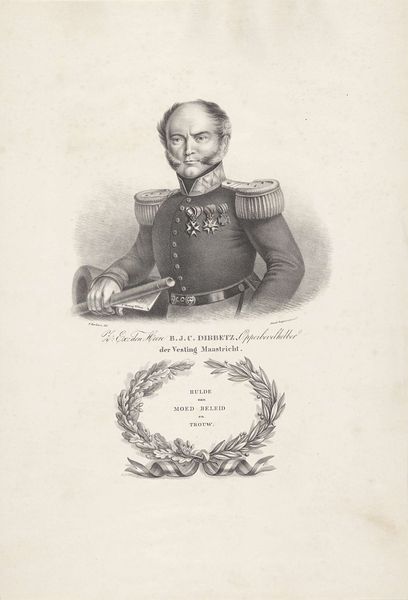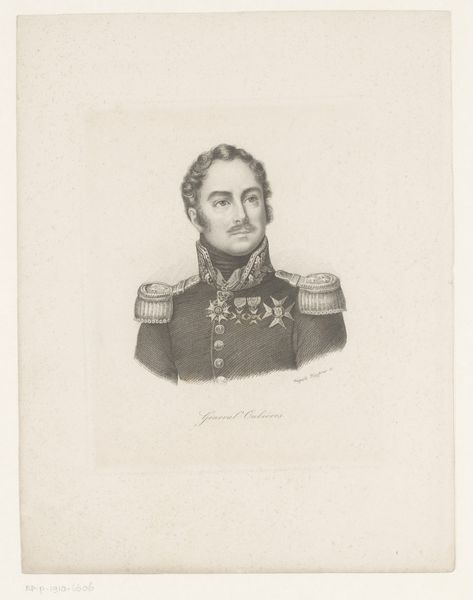
print, engraving
#
portrait
#
neoclacissism
#
light pencil work
#
16_19th-century
# print
#
pencil drawing
#
history-painting
#
engraving
Dimensions: height 326 mm, width 172 mm
Copyright: Rijks Museum: Open Domain
Curator: This portrait, rendered sometime after 1830, depicts Frederik Frans I, Grand Duke of Mecklenburg-Schwerin. The artwork is a print, utilizing engraving techniques. What are your initial thoughts? Editor: Stark. Even in monochrome, his gaze is striking, quite confrontational, really. There’s an attempt to portray power here, definitely calculated, but it doesn't quite reach the theatrical grandeur you sometimes see in these kinds of depictions. Curator: Yes, his stare holds authority, doesn’t it? And the engraver masterfully captured details – observe the epaulettes, medals, each conveying status and military might, recalling similar elements within neoclassicism. Editor: Absolutely, it's laden with those visual cues of authority. But it seems… staged somehow, doesn’t fully convince. It’s more about projecting an image than conveying genuine gravitas. What role would images like this have played at the time? Curator: These portraits served as powerful instruments, anchoring familial lineage, validating authority. They propagated a refined image, constructing public memory while establishing continuities across time. Symbols were instrumental, becoming an embodiment of the empire and its leader. Editor: A constructed narrative of legitimacy. This piece becomes more interesting when you consider how readily these images were reproduced. An engraving made the Grand Duke and his power far more accessible than a unique painted portrait ever could. Curator: Disseminating these images across the duchy allowed a wider section of the populace to familiarize themselves with their ruler’s iconography, effectively solidifying and stabilizing a nascent visual vocabulary for sovereignty. Editor: So it’s a carefully controlled act of image-building aimed at the wider populace through the means of printmaking? Curator: Precisely, it's power presented for public consumption and recognition through symbolic imagery. The continuity of this representation solidifying his position and perhaps justifying his line as rightful rulers. Editor: Well, examining it has reminded me how constructed "history" is—even in seemingly straightforward portraiture. Curator: Yes, art persists as cultural echo. These echoes can prompt reflections, deepening our understanding of the symbology and visual representations used through epochs.
Comments
No comments
Be the first to comment and join the conversation on the ultimate creative platform.
